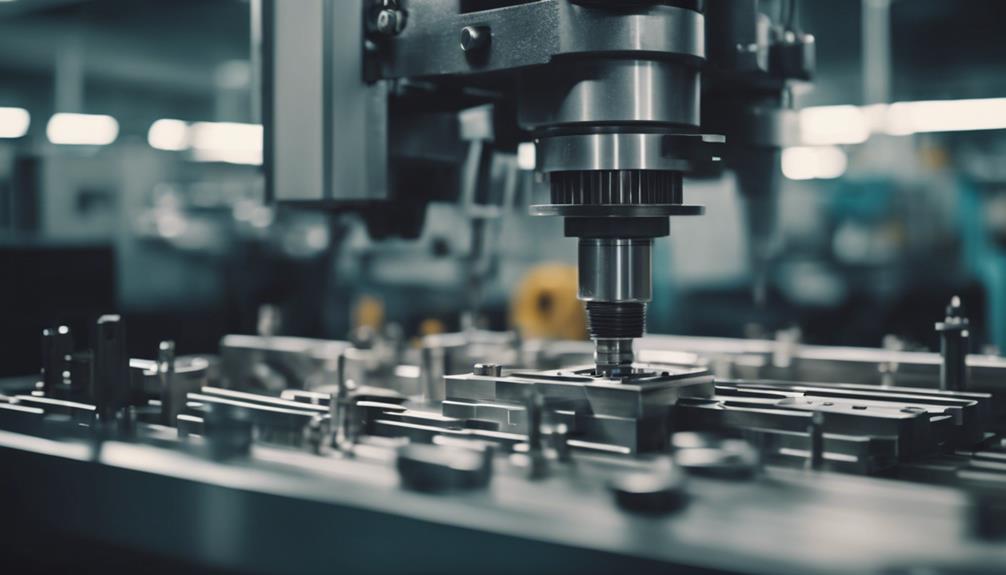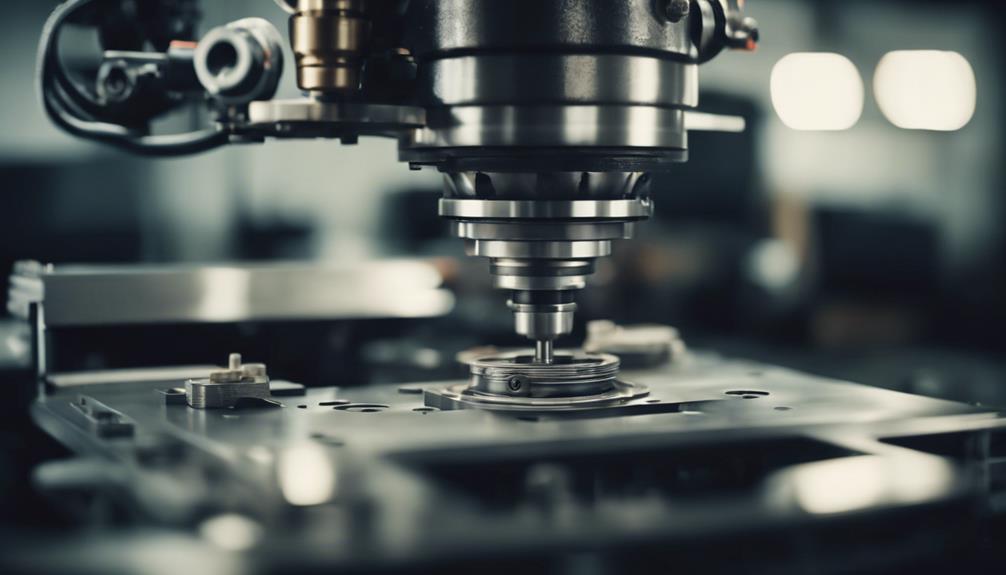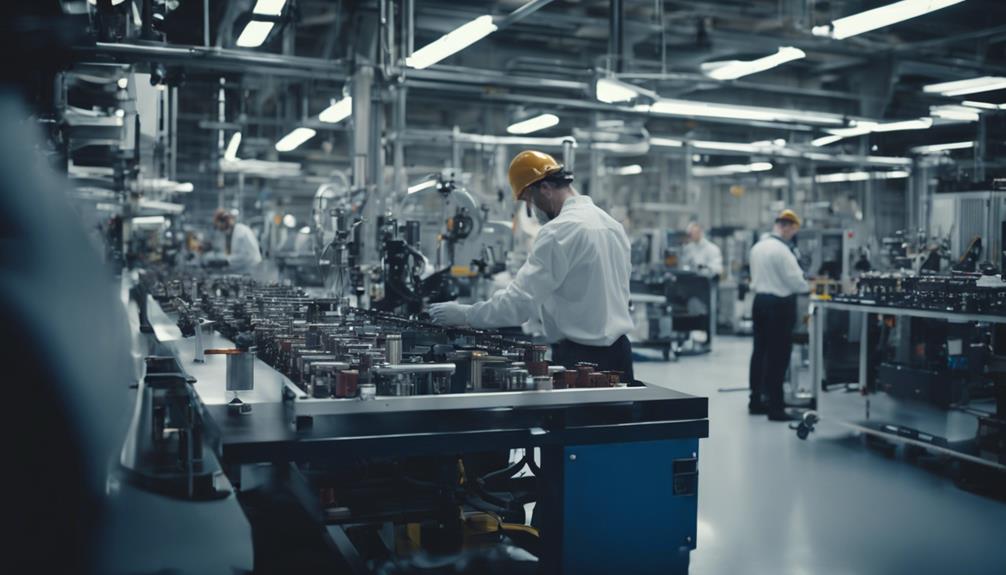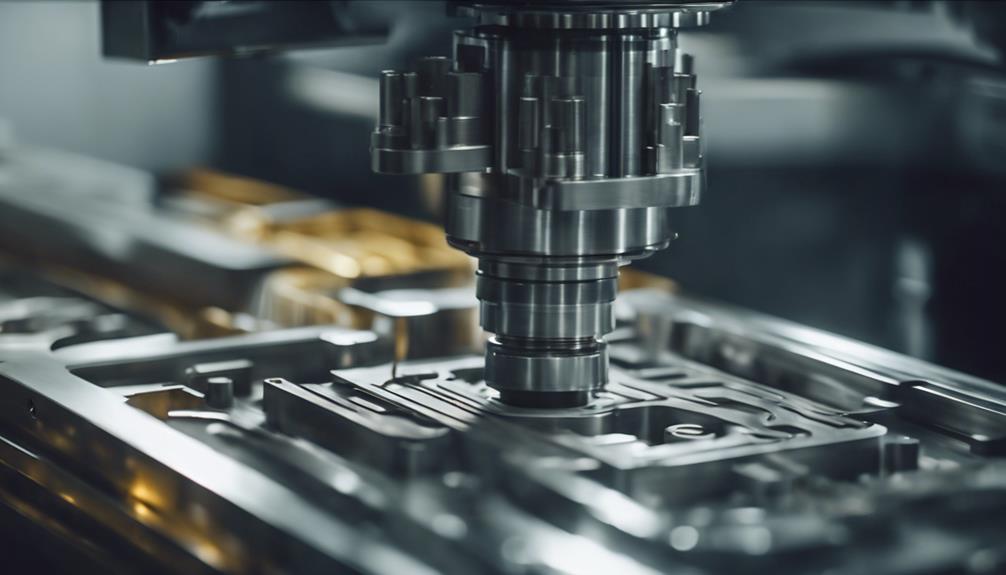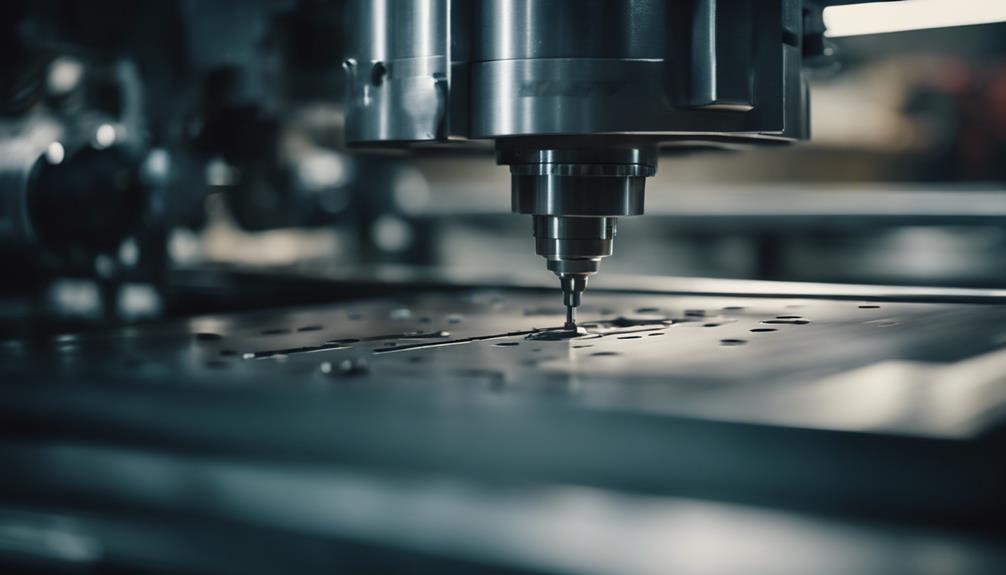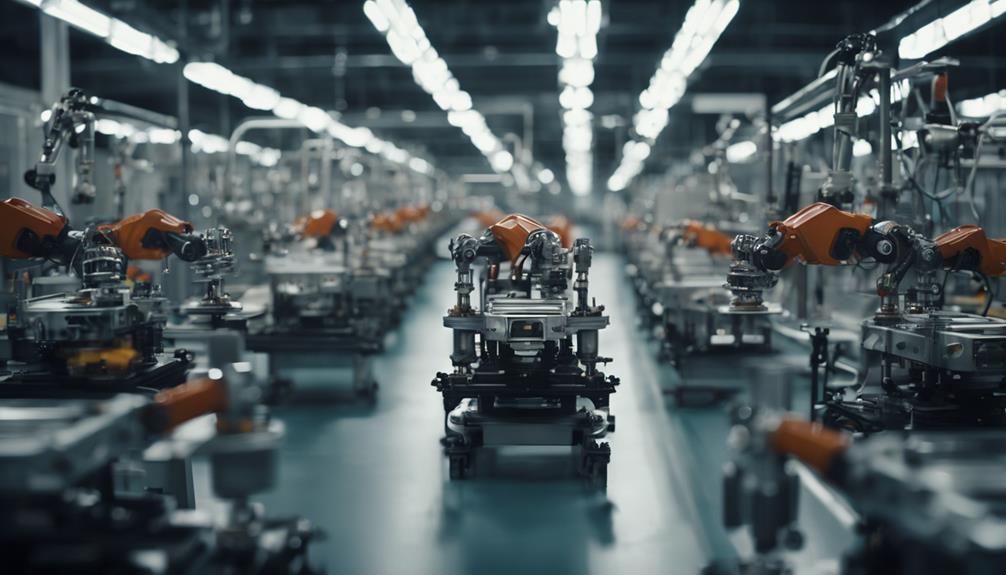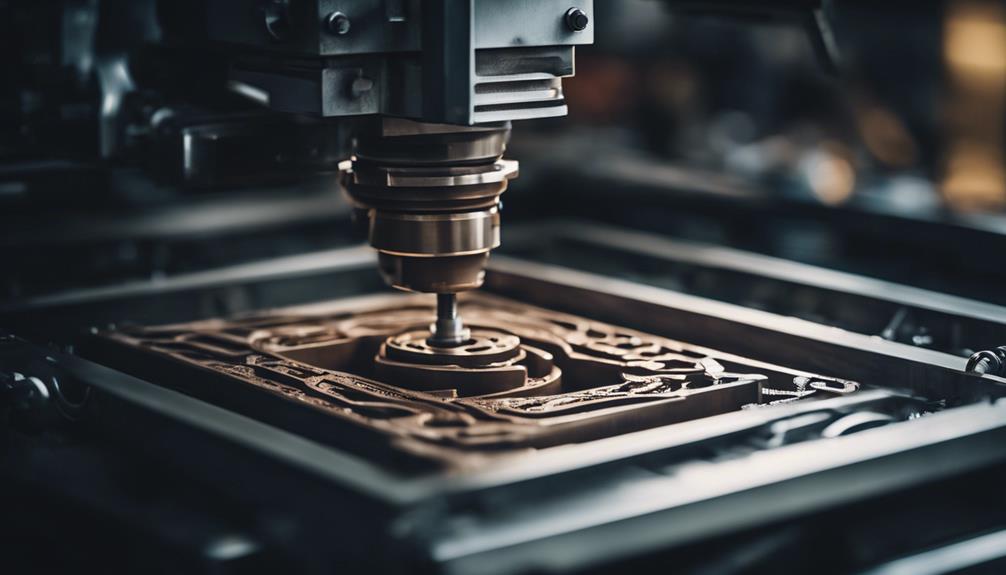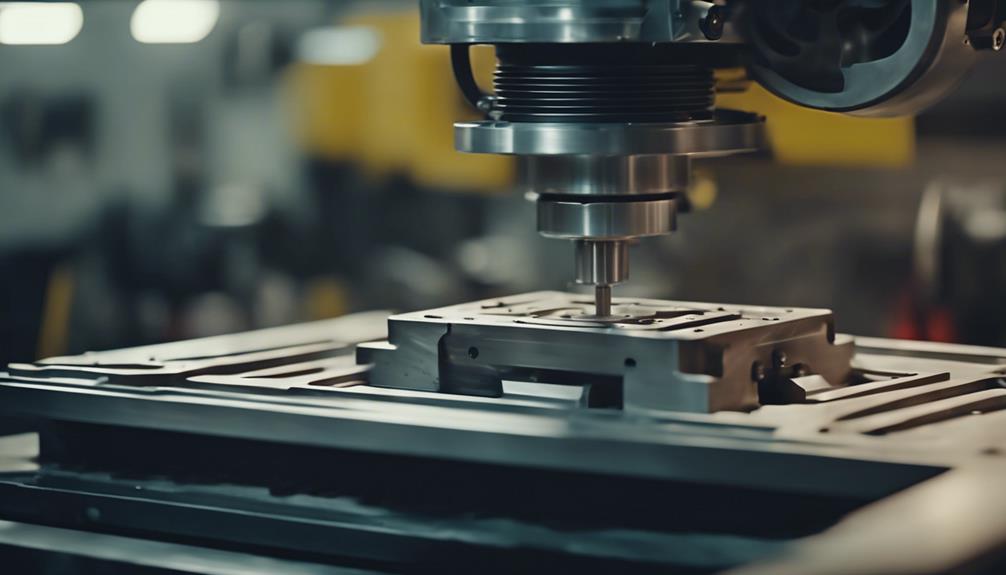Are you looking to take your CNC machining skills to the next level and achieve high-precision results in auto part production? Look no further.
In this article, we will reveal 13 secrets that will boost your auto part precision.
From mastering CAD/CAM software to optimizing tooling and implementing quality control measures, we will guide you through the techniques and strategies necessary for achieving tight tolerances and enhancing surface finish.
Get ready to revolutionize your CNC machining skills.
Table of Contents
Key Takeaways
- Machine capabilities and tool selection are crucial for achieving high precision in CNC machining.
- When selecting a CNC machine for auto part precision, factors like rigidity, accuracy, spindle speed, and tool capacity should be considered.
- High-speed spindles, precision linear guides, rigid machine structure, advanced control system, and automatic tool changer system are key machine features for achieving precision and productivity.
- Cost considerations should include initial purchase price, long-term operating costs, energy consumption, maintenance requirements, and tooling costs. Finding the right balance between cost and precision is important.
Understanding the Basics of High-Precision CNC Machining
You need to understand the basics of high-precision CNC machining to achieve accurate results. Understanding machine capabilities and the importance of tool selection are crucial factors in achieving precision in CNC machining.
Machine capabilities refer to the specific functions and features of the CNC machine that determine its performance and accuracy. These capabilities include factors such as the machine’s axis movement, spindle speed, and tool capacity. By understanding the capabilities of your machine, you can determine its limitations and adjust your machining processes accordingly.
Another key aspect of high-precision CNC machining is the selection of the right tools. The choice of tools directly impacts the accuracy and quality of the machined parts. Different tools have varying levels of rigidity, cutting speed, and precision. It’s essential to select tools that match the requirements of your machining project and the material being machined. Factors such as tool material, coating, and geometry play a significant role in achieving high precision.
To ensure accurate results in high-precision CNC machining, it’s essential to have a clear understanding of your machine’s capabilities and select appropriate tools. Taking these factors into consideration will help you optimize your machining processes and achieve the desired level of precision.
Selecting the Right CNC Machine for Auto Part Precision
When it comes to selecting the right CNC machine for auto part precision, there are several key machine features to consider. These features include:
- The machine’s rigidity, accuracy, and repeatability
- The machine’s spindle speed and tool capacity
It’s essential to strike a balance between precision and productivity, as higher precision often comes at the cost of slower machining speeds.
Additionally, cost considerations should be taken into account when choosing the right CNC machine for auto part precision. These considerations include:
- The initial investment
- Maintenance expenses
- Operating expenses
Taking all of these factors into consideration will help ensure that you select the best CNC machine for your auto part precision needs.
Key Machine Features
To ensure high precision in auto part machining, it is crucial to carefully consider the key machine features during the selection process. These features play a vital role in determining the accuracy, speed, and overall performance of the CNC machine. Here are some essential machine features that you should consider when selecting a CNC machine for auto part precision:
| Key Machine Features | Description |
|---|---|
| High-Speed Spindles | Powerful spindles with high rotational speeds allow for faster cutting and better surface finishes. |
| Precision Linear Guides | Linear guides ensure smooth and precise movement of the machine axes, reducing vibrations and enhancing accuracy. |
| Rigid Machine Structure | A stiff and rigid machine structure prevents flexing and maintains stability, resulting in improved accuracy during machining. |
| Advanced Control System | An advanced control system with high-resolution encoders and intelligent algorithms enables precise control of machining operations. |
| Automatic Tool Changer System | An automatic tool changer system reduces setup time and increases productivity by allowing for the use of multiple tools in one setup. |
These key machine features are critical for achieving high precision in auto part machining. When selecting a CNC machine, ensure that it possesses these features to optimize the performance and accuracy of your machining operations.
Precision Vs. Productivity
Selecting the right CNC machine for auto part precision involves balancing precision and productivity. Achieving tight tolerances while maintaining high productivity is a critical consideration for manufacturers. When choosing a CNC machine, it’s important to evaluate its capabilities in terms of precision and productivity.
Precision refers to the ability of the machine to consistently produce parts within the specified tolerances. Productivity, on the other hand, refers to the machine’s efficiency in completing tasks and producing parts in a timely manner. It’s essential to strike a balance between precision and productivity to ensure optimal performance.
Factors such as machine accuracy, spindle speed, tooling, and cutting parameters should be carefully considered to achieve the desired level of precision without compromising productivity.
Cost Considerations
If you’re looking to select the right CNC machine for auto part precision, one key factor to consider is the cost. Conducting a cost analysis is crucial to ensure cost optimization and efficient production.
When evaluating the cost of CNC machines, it’s important to consider not only the initial purchase price but also the long-term operating costs. This includes factors such as energy consumption, maintenance requirements, and tooling costs.
Additionally, the accuracy and repeatability of the machine should be taken into account as they directly impact the quality of the finished parts and can affect production costs.
Optimizing Tooling for Enhanced Precision in CNC Machining
Ensure precise CNC machining by optimizing your tooling with the right cutting parameters and tool materials. Optimizing cutting parameters and reducing tool wear are crucial steps in achieving enhanced precision in CNC machining. By selecting the appropriate cutting parameters such as cutting speed, feed rate, and depth of cut, you can maximize tool life and minimize errors in the machining process. Additionally, using the right tool materials, such as high-speed steel (HSS), carbide, or ceramic, can greatly impact the precision of the final product.
Consider the following factors when optimizing your tooling for enhanced precision:
| Factor | Description | Benefits |
|---|---|---|
| Cutting Speed | The speed at which the cutting tool moves through the material. | – Optimal cutting speed reduces tool wear and heat generation. |
| Feed Rate | The rate at which the cutting tool advances into the material. | – Proper feed rate ensures smooth and consistent material removal. |
| Depth of Cut | The distance the cutting tool penetrates into the material during each pass. | – Appropriate depth of cut prevents excessive tool deflection and chatter, leading to improved precision. |
Mastering CAD/CAM Software for High-Precision Auto Part Design
Maximize your precision in auto part design by mastering CAD/CAM software. CAD (Computer-Aided Design) and CAM (Computer-Aided Manufacturing) software play a crucial role in achieving high-precision auto part designs. These software programs allow engineers to create 3D models of auto parts and generate toolpaths for CNC (Computer Numerical Control) machines to follow during the manufacturing process.
Mastering CAD/CAM software involves gaining a deep understanding of its functionalities and tools. It requires proficiency in creating complex geometries, precise measurements, and accurate tolerances. CAD software provides a platform for designing auto parts with intricate details, ensuring that every component fits together perfectly. It allows you to visualize the final product in 3D, making it easier to detect and rectify any design flaws before manufacturing.
CAM software, on the other hand, converts the CAD model into machine instructions. It generates toolpaths that determine the cutting, drilling, and milling operations required to produce the auto part. By optimizing the CAM settings, such as feed rates and tool speeds, you can further enhance precision in the machining process.
Moreover, mastering CAD/CAM software enables you to automate repetitive tasks and streamline the design-to-production workflow. It allows for seamless collaboration and communication between design engineers and manufacturing teams, reducing errors and ensuring that the final auto part meets the desired specifications.
Achieving Tight Tolerances in CNC Machining for Auto Parts
To achieve high precision in CNC machining for auto parts, it’s crucial to focus on achieving tight tolerances. Tight tolerances ensure that the final product meets the required specifications and functions effectively.
Techniques such as careful tool selection, proper machine calibration, and advanced measuring instruments play a significant role in achieving tight tolerances.
However, it’s important to acknowledge the challenges that come with achieving precision, such as material limitations and the complexity of the part design.
Importance of Tight Tolerances
You need to understand the importance of tight tolerances in CNC machining for auto parts. Achieving tight tolerances is crucial in ensuring the precision and functionality of the final product.
Tight tolerances refer to the allowable deviation from the specified dimensions, and they play a significant role in the performance of auto parts. One of the primary advantages of tight tolerances is improved product quality. By adhering to tight tolerances, auto parts can be manufactured with consistent dimensions, ensuring proper fit and function.
This is especially important in critical components such as engine parts or safety systems. Achieving tight tolerances requires the use of precision machining techniques, such as high-speed machining, multi-axis CNC milling, and advanced measurement systems. These techniques allow manufacturers to achieve the desired level of precision and accuracy, leading to reliable and high-quality auto parts.
Techniques for Precision
To achieve tight tolerances in CNC machining for auto parts, it’s important to utilize specific techniques that optimize precision. One effective technique is implementing automation. By automating the machining process, you can eliminate human error and ensure consistent and accurate results. Automation also allows for faster production times and increased efficiency.
Another crucial technique is the use of precision measurement techniques. These techniques involve the use of advanced measuring tools and equipment to verify the accuracy of the machined parts. This includes the use of coordinate measuring machines (CMMs), optical measurement systems, and laser scanning technology.
Additionally, employing advanced software and programming techniques can greatly enhance precision in CNC machining. CAD/CAM software enables the creation of highly detailed and accurate part designs, while simulation software helps identify and correct any potential machining issues before production.
Challenges in Achieving Precision
Achieving tight tolerances in CNC machining for auto parts can be a challenging task due to the need for precise measurements and minimal margin of error.
The process of achieving accuracy in CNC machining involves several challenges that must be overcome. One of the main challenges is ensuring that the machine is properly calibrated to maintain consistent accuracy throughout the machining process. This involves regular maintenance and calibration checks to ensure that the machine is operating at its optimal level.
Another challenge is selecting the right cutting tools and techniques to achieve the desired precision. The choice of cutting tools, such as end mills or drills, can greatly impact the accuracy of the final product.
Additionally, factors such as material properties, temperature variations, and machine vibrations can also pose challenges in achieving precision.
Overcoming these challenges requires careful planning, attention to detail, and continuous monitoring to achieve the desired level of accuracy in CNC machining for auto parts.
Implementing Advanced Cutting Strategies for Improved Precision
How can advanced cutting strategies be implemented to improve precision in CNC machining?
Advanced cutting techniques play a crucial role in achieving high precision in CNC machining. By implementing these strategies, you can enhance the accuracy and efficiency of your machining operations.
One key technique is high-speed machining, which involves using higher cutting speeds and feed rates to remove material more quickly and precisely. This approach reduces machining time and improves dimensional accuracy.
Another advanced cutting strategy is trochoidal milling, which involves machining in a continuous circular motion to increase tool life and improve surface finish. This technique is particularly effective for machining complex contours and thin-walled components.
Additionally, adaptive control is a cutting-edge technology that adjusts cutting parameters in real-time based on the actual conditions encountered during machining. This dynamic adjustment improves precision by compensating for variations in tool wear, material properties, and machine performance.
Other precision machining strategies include using smaller tool diameters, employing high-performance tool coatings, and implementing advanced toolpath optimization algorithms.
Overcoming Challenges in Fixturing for Auto Part Machining
To achieve high precision in CNC machining of auto parts, you must address the challenges associated with fixturing.
Optimal fixture design is crucial for ensuring part stability during machining, which minimizes the occurrence of errors.
Optimal Fixture Design
Maximizing fixture stability is crucial for achieving high precision in CNC machining for auto parts. Fixture design optimization plays a key role in ensuring the stability and accuracy of the machining process.
The first step in optimal fixture design is to understand the specific requirements of the auto part being machined. This includes analyzing the part’s geometry, material properties, and machining forces. By considering these factors, the fixture can be designed to provide the necessary support and clamping force to prevent part movement during machining.
Additionally, the fixture should be rigid enough to minimize vibrations and deflections, which can negatively impact precision. The use of suitable materials, such as high-quality steel or aluminum alloys, can further enhance fixture stability.
Furthermore, incorporating features like locating pins, clamps, and supports can aid in maintaining the desired positioning and alignment of the auto part.
Ensuring Part Stability
Ensure the stability of your auto parts by addressing the challenges in fixturing for CNC machining. Part stability is crucial for achieving high precision in machining processes. By employing precision techniques and overcoming fixturing challenges, you can ensure that your auto parts are securely held in place during machining operations.
One of the main challenges in fixturing is achieving a balance between rigidity and flexibility. While the fixture needs to hold the part firmly, it should also allow for easy setup and removal. Additionally, the fixture must provide adequate support to prevent part deflection and vibration during machining.
To address these challenges, consider the following techniques:
| Technique | Description |
|---|---|
| 1. Modular Fixtures | Utilize modular fixture systems that offer flexibility and adaptability for different part geometries. |
| 2. Clamping Techniques | Employ clamping techniques such as hydraulic clamps or pneumatic clamps to securely hold the part in place. |
| 3. Locating Pins | Use locating pins to accurately position the part in the fixture, ensuring repeatable setups. |
| 4. Anti-Vibration Solutions | Incorporate anti-vibration devices or damping materials to minimize vibrations and enhance stability. |
Minimizing Machining Errors
Minimize errors in machining by addressing the challenges in fixturing for auto part machining.
Proper fixturing is crucial for achieving high precision in CNC machining. One of the key challenges is minimizing setup time, as any errors or inaccuracies during this phase can have a significant impact on the final product.
To reduce setup time, consider using modular fixturing systems that allow for quick and easy setup changes. Additionally, utilizing advanced tooling technologies can help in reducing tool wear, which can lead to machining errors.
Look for tooling options that offer improved durability and tool life, such as coated or carbide tools.
Enhancing Surface Finish for High-Precision Auto Parts
To achieve a high-quality surface finish for your auto parts, use appropriate machining techniques and select the right cutting tools. The surface finish of a part plays a crucial role in its performance and appearance.
Here are some techniques and tips to enhance the surface finish of your high-precision auto parts:
- Optimize cutting parameters:
- Adjust the cutting speed, feed rate, and depth of cut to minimize surface roughness.
- Use high precision machining techniques such as high-speed machining or micro-milling to achieve finer surface finishes.
- Select the right cutting tools:
- Choose cutting tools with a sharp cutting edge and appropriate tool geometry for the specific material being machined.
- Consider using specialized coatings, such as diamond-like carbon (DLC) coatings, to reduce friction and improve surface finish.
- Implement proper coolant and lubrication:
- Use the right cutting fluid to reduce heat and friction during machining, which can lead to better surface finish.
- Ensure proper chip evacuation to prevent re-cutting and improve surface quality.
Implementing Quality Control Measures for Precision Machining
To consistently maintain high precision in your machining process, regularly inspect and calibrate your equipment. Implementing quality control measures is crucial to ensure that your parts meet the required specifications. One effective way to achieve this is by implementing statistical analysis techniques and utilizing quality control software. Statistical analysis allows you to identify variations and trends in your machining process, enabling you to make data-driven decisions for process improvement. Quality control software can help automate data collection, analysis, and reporting, streamlining your quality control procedures.
The table below illustrates some key measures that can be implemented for quality control in precision machining:
| Quality Control Measure | Description | Benefits |
|---|---|---|
| Statistical Process Control (SPC) | Monitors and controls the machining process using statistical methods. | Detects and prevents process variations, reduces defects, and improves overall quality. |
| Gauge R&R Studies | Evaluates the reliability and repeatability of measurement systems. | Ensures accurate measurement results, identifies measurement errors, and minimizes measurement variations. |
| First Article Inspection (FAI) | Inspects the first manufactured part to verify conformance to specifications. | Prevents nonconforming parts from reaching customers, reduces rework, and improves customer satisfaction. |
| Corrective Action System | Identifies and addresses the root causes of quality issues. | Prevents recurrence of defects, improves process efficiency, and enhances overall product quality. |
| Document Control | Manages and controls documents related to quality control procedures. | Ensures the use of up-to-date procedures, reduces errors due to outdated documents, and enhances traceability. |
Continuous Improvement in High-Precision CNC Machining Techniques
Improve your high-precision CNC machining techniques through continuous refinement and optimization. Achieving precision in CNC machining requires a commitment to ongoing improvement.
Here are two key strategies to help you continuously enhance your precision techniques:
- Regular Performance Analysis:
- Conduct regular performance analysis to identify areas for improvement. This can include analyzing machine data, evaluating tool wear, and assessing dimensional accuracy.
- Use statistical process control (SPC) techniques to monitor and control machining variables. SPC enables you to detect process variations and take corrective action before they impact part quality.
- Invest in Advanced Technologies:
- Stay up to date with the latest CNC machining technologies and equipment. Advancements in machine tools, cutting tools, and software can significantly improve precision and efficiency.
- Embrace automation and robotics to enhance accuracy and repeatability. Automated systems can minimize human errors and ensure consistent part quality.
By continuously striving to improve your precision techniques, you can enhance the accuracy and consistency of your CNC machining processes. Regular performance analysis and investment in advanced technologies are integral to achieving high precision in auto part manufacturing.
Frequently Asked Questions
How Does the Type of Material Used in CNC Machining Affect the Precision of Auto Parts?
The type of material used in CNC machining significantly impacts the precision of auto parts. Factors such as temperature changes and tool wear can affect the accuracy of the machining process, leading to variations in the final product.
What Are Some Common Mistakes to Avoid When Designing Auto Parts for High-Precision CNC Machining?
When designing auto parts for high-precision CNC machining, it is crucial to avoid common design mistakes. These mistakes can include disregarding factors that affect precision, such as material selection, tooling, and dimensional tolerances.
How Can the Use of Coolant or Lubricants Impact the Precision of CNC Machining for Auto Parts?
Using coolant or lubricants in CNC machining for auto parts is crucial. Temperature control greatly impacts precision by preventing thermal expansion and minimizing tool wear. Tool path optimization is equally important for precise machining.
What Are Some Strategies for Reducing Vibration During the CNC Machining Process to Improve Precision?
To reduce vibration during CNC machining and improve precision, utilize calibration techniques and damping methods. These strategies ensure that the machine is properly aligned and that any unwanted vibrations are absorbed, resulting in higher precision auto parts.
How Can the Selection of Cutting Tools and Inserts Impact the Precision of CNC Machining for Auto Parts?
The selection of cutting tools and inserts is crucial for precision in CNC machining for auto parts. The choice of cutting tool materials and the importance of tool geometry greatly impact the accuracy and quality of the machining process.

